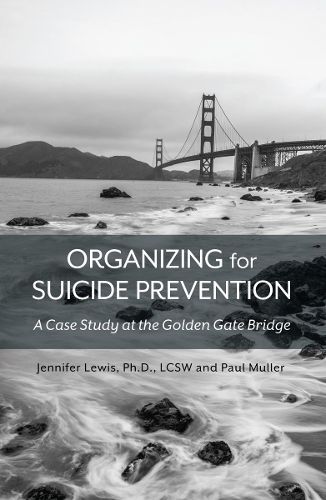Readings Newsletter
Become a Readings Member to make your shopping experience even easier.
Sign in or sign up for free!
You’re not far away from qualifying for FREE standard shipping within Australia
You’ve qualified for FREE standard shipping within Australia
The cart is loading…






Organizing for Suicide Prevention: A Case Study at the Golden Gate Bridge describes the long struggle to end a tragic history of individuals jumping from the bridge to their death. Readers learn how a group of advocates grew and sustained a coalition led by families touched by suicide, and including prevention supporters, health professionals, and other interested parties, to build a successful campaign for a suicide prevention structure at the Golden Gate Bridge. Central to this story is an understanding that restricting easy access to lethal means-a simple yet often poorly understood suicide prevention technique-can save lives.
The text demonstrates how the coalition’s advocacy was employed to gain approval for an access restriction structure on the bridge. Dedicated chapters help readers understand how to develop a public campaign to address suicide hotspots or other mental health issues through community organizing, assertive communications, and a persistent focus on goals.
Balancing the findings of suicide prevention researchers with practical application, Organizing for Suicide Prevention is an ideal textbook for undergraduate or graduate social work macro courses focused on communities and organizations. It is also a valuable resource for practicing social workers, community advocates, and community organizers.
$9.00 standard shipping within Australia
FREE standard shipping within Australia for orders over $100.00
Express & International shipping calculated at checkout
Organizing for Suicide Prevention: A Case Study at the Golden Gate Bridge describes the long struggle to end a tragic history of individuals jumping from the bridge to their death. Readers learn how a group of advocates grew and sustained a coalition led by families touched by suicide, and including prevention supporters, health professionals, and other interested parties, to build a successful campaign for a suicide prevention structure at the Golden Gate Bridge. Central to this story is an understanding that restricting easy access to lethal means-a simple yet often poorly understood suicide prevention technique-can save lives.
The text demonstrates how the coalition’s advocacy was employed to gain approval for an access restriction structure on the bridge. Dedicated chapters help readers understand how to develop a public campaign to address suicide hotspots or other mental health issues through community organizing, assertive communications, and a persistent focus on goals.
Balancing the findings of suicide prevention researchers with practical application, Organizing for Suicide Prevention is an ideal textbook for undergraduate or graduate social work macro courses focused on communities and organizations. It is also a valuable resource for practicing social workers, community advocates, and community organizers.